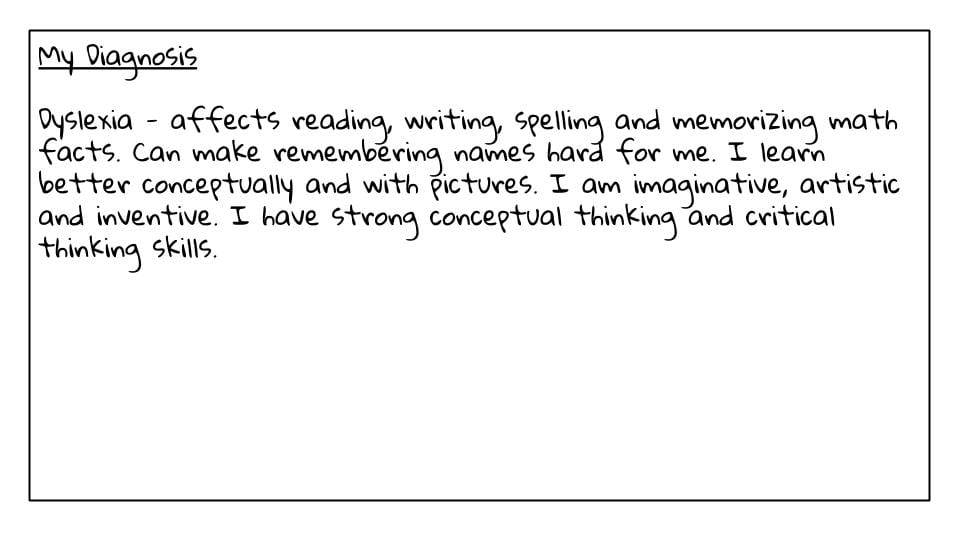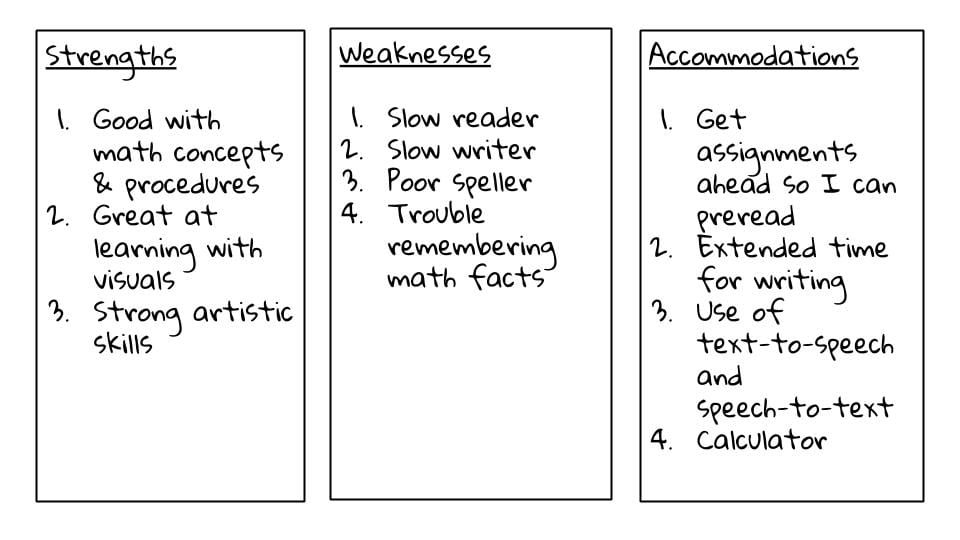If you have a child who struggles with learning, you’re used to advocating for their needs. Parental advocacy is essential in elementary school and even as your child moves into middle school, but as they begin high school, it’s time for them to start advocating for themselves.
Self-advocacy is one of the most important skills for a young adult with learning differences. After all, you can’t go to college and the workplace with them. Eventually they’ll need to stand on their own two feet.
When teachers work on self-advocacy skills with students, parents can sometimes undermine this by rushing to step in, rather than empowering their child to advocate for themselves. In this case, think about stepping back and encouraging your child to communicate directly with their teacher.
Yet, some students may not get self-advocacy support from teachers. In this case, parents need to be ready to help their child build self-advocacy skills — teaching their child how to define their needs, know their rights and communicate when support is needed.
Where to begin? Help them discover their learning needs.
First start by helping your child brainstorm their strengths and weaknesses. Be sure they have the right vocabulary to articulate how they learn. If they have a diagnosis they should really understand it and how it impacts them. Always stress that some things will be more difficult, but others may be easier for them. It is a learning difference, not a limitation. In fact, the best predictor of success for students with learning disabilities is the ability to understand their disability, articulate how they learn best and to advocate for what they need.
Create a 3X3 Card. On one side, your child should write their diagnosis and a description of how it affects them and how they learn. On side two, they should write 3 strengths, 3 weaknesses, and 3 accommodations. Yes, you can list more, but 3 is a minimum and easy enough to remember.

 Once your child has a solid understanding of their learning needs, it’s time to help them build self-advocacy skills. Self-advocacy is part of problem solving and before you can advocate for a solution you must come up with possible solutions to the problem. Try these steps below.
Once your child has a solid understanding of their learning needs, it’s time to help them build self-advocacy skills. Self-advocacy is part of problem solving and before you can advocate for a solution you must come up with possible solutions to the problem. Try these steps below.
Identify the learning problem.
What went wrong or what was hard for me. For example, they may have done poorly on a test because they didn’t have enough time to read the test questions and it took too long to write out their responses. They felt rushed and anxious to finish the test on time.
Try putting control of the problem and solution in the hands of your student. Students need to feel empowered to ask for accommodations. Be encouraging by telling them that their teacher wants to help — they just need to know what accommodations they need. Let your child know that teachers are impressed with students who advocate for themselves and are committed to their learning.
Brainstorm solutions and advocate for accommodations.
Think about your strengths and weaknesses, what has worked in the past, and what accommodations work well for you. Your student may not know the answer right away. Give them a few possibilities so they can choose a solution they think will work best. For example, to the above problem, your child may say that in the past, they did better when there were no time limits. They would like to have extended time on tests.
Communicate.
Encourage your child to communicate using email. They should be clear, concise and specific. They should be respectful and use “I” statements as opposed to “you” statements. Use the sentence frames below to help draft their email.
Try this template for Self-Advocacy.
Dear (Teacher),
Today in class I struggled with (blank). I have (disability diagnosis) and (academic task) is hard for me. In the past, I have found that (solution) works better for me. I am entitled to (specific accommodations) in my IEP or 504 plan. I’m sure there are other students in the class that could also benefit from (specific accommodations) as well. I appreciate your help in succeeding in this class.
Best regards,
(Your child’s name)
Here’s an example.
Dear Ms. Foster,
Today in class I struggled to read the test quickly and answer the questions. I have dyslexia which causes me to read and write slower than other students. When I have to take a test with time limits, I become anxious and I can’t show you what I know. In the past, I have found that if I can have time and half to take the test, I will do much better. My IEP entitles me to this accommodation as it allows me to be successful. I would appreciate it if I can make arrangements with you to stay after school to complete tests. I appreciate your help so that I can succeed in this class.
Best Regards,
Joe
Share your thoughts.
Is your family already working on self-advocacy at home? What do you do to help your teen develop the self-advocacy skills they’ll need in high school, college and beyond?
___
Written by Donna Austin
Related Topics:

